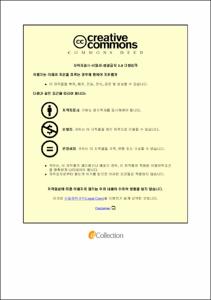중국과 한국의 신에너지자동차 산업 지원정책의 비교 분석
- Alternative Title
- 도서관 발전방안
- Abstract
- More than 30 years after the reform and opening up, China has finally grown into the world's second largest economic power, while South Korea's economic development continues to run. China and South Korea are in the process of high-speed growth, due to the rapid industrialization and urbanization, the demand for cars has increase gradually, which means two countries in the near future will face problems such as, insufficient resources and environmental pollution. These problems urgently need a reasonable solution.
The new energy vehicles compared with existing internal combustion engine cars have effectively reduced greenhouse gas emissions and other environmental pollution problems. Starting in the late 1990s and early 2000s, countries began to study new energy vehicles powered by hydrogen and batteries. But as a result of understanding of new energy vehicles is not very comprehensive, cost of new energy vehicles is relatively expensive, so people's purchase desire for new energy vehicles is still not very strong. This study analyzes the development direction and prospect of new energy vehicles through comparative analysis of industrial support policies of the two countries.
According to South Korea's environment ministry and the ministry of finance website regarding new energy vehicles and the collection policy of the two countries, this paper puts forward the following countermeasures to the development of new energy vehicles. Firstly, the economic level. The government can provide incentives for people, such as tax breaks and subsidies, to encourage people to buy new energy cars. Secondly, infrastructure construction. The new energy vehicle infrastructure should be strengthened to promote the development of the new energy car industry. Thirdly, necessary legal and institutional support. Provide stable domestic new energy automobile market, promote the commercialization of new energy vehicles patent technology, protect the enterprise innovation behavior of interests by law, and need necessary legal and policy support. Fourthly, from the point of view of South Korea, the most beneficial way for new energy vehicles industry development is to provide free new energy cars for the country's public institutions.
Key words: New Energy Vehicle, Green Car, Support Policy, Tax Policy, Comparative Study
- Issued Date
- 2022
- Awarded Date
- 2022. 8
- Type
- Dissertation
- Publisher
- 부경대학교
- Alternative Author(s)
- 장람월
- Affiliation
- Pukyong National University, Graduate School
- Department
- 대학원 행정학과
- Advisor
- 김창수
- Table Of Contents
- 제1장 서 론 1
제1절 연구의 배경과 목적 1
제2절 연구의 범위와 방법 2
1. 연구의 범위 2
2. 연구의 방법 3
제2장 이론적 배경 5
제1절 신에너지 자동차의 개념과 종류 5
제2절 신에너지 자동차 개발 배경 7
1. 자동차 배기가스로 인한 건강피해 7
2. 자동차 배기가스로 인한 직접적인 피해 8
3. 자동차 배기가스로 인한 간접적인 피해 9
4. 대기오염의 심화와 한경보건 위해의 증가 10
제3절 과학기술혁신과 정부의 산업지원정책 12
1. 과학기술혁신의 의미 12
2. 기술혁신의 종류 13
3. 기술혁신과 정부 지원정책의 관계 13
1) 기술혁신과 재정정책 – 보조금정책·조세감면정책 13
2) 기술혁신과 기술지원 정책 15
제4절 선행연구의 검토 17
제5절 분석틀 22
1. 결과변수의 선정 22
1) 신에너지자동차산업의 발전 22
2) 환경오염의 개선 23
2. 원인변수의 선정 25
1) 신에너지 자동차 보조금 정책 분석 25
2) 신에너지 자동차 조세감면 정책 분석 26
3) 신에너지 자동차 기술개발지원 정책 분석 28
3. 분석틀의 설정 31
제3장 한국과 중국의 신에너지자동차 산업현황과 환경오염 비교분석 33
제1절 한국 신에너지 자동차 산업현황과 환경오염 33
1. 블레이드 전기차 34
2. 하이브리드 전기차(HEV) 34
3. 수소연료전지차(Fuel Cell Electric Vehicle, FCEV) 35
4. 환경오염 개선정도 37
제2절 중국 신에너지 자동차 산업현황과 환경오염 38
1. 중국의 신에너지 자동차 산업 현황 38
2. 중국의 환경오염 개선정도 42
제4장 한국과 중국의 신에너지자동차 산업지원정책의 비교분석 44
제1절 보조금정책 비교 분석 44
1. 한국 신에너지 자동차 산업의 보조금정책 분석 44
2. 중국의 신에너지 자동차 보조금정책 분석 47
제2절 조세감면정책 비교분석 51
1. 한국 신에너지 자동차 산업의 조세감면정책 분석 51
2. 중국의 신에너지자동차 산업의 조세감면 정책 분석 53
제3절 기술개발지원 정책 비교분석 56
1. 한국 신에너지 자동차산업의 기술개발지원 정책 분석 56
1) 배터리 장비 개발지원 56
2) 안전계수 비교우위 제고 지원 56
3) 산업기술 업그레이드 지원 57
2. 중국 신에너지 자동차 산업의 기술발전 지원정책 분석 58
1) 배터리 장비 개발 지원 58
2) 안전계수 비교우위 제고 지원 58
3) 산업기술 업그레이드 지원 59
제5장 한국과 중국 신에너지자동차 산업지원정책의 비교분석 결과와 정책적 시사점 61
제1절 신에너지자동차 산업현황과 환경오염영향 비교분석 결과 61
1. 신에너지자동차 개발 현황 61
2. 환경오염 개선 결과 62
제2절 신에너지자동차산업 지원정책 비교분석 결과 64
1. 보조금 정책 64
2. 조세감면 정책 66
3. 기술지원 정책 67
제3절 비교분석결과의 종합과 정책적 시사점 68
1. 비교분석결과의 종합과 해석 68
2. 보조금 정책의 중요성과 지속성의 한계 인식 72
3. 조세감면 정책의 중요성과 지속성의 한계 인식 73
4. 기술지원 정책의 중요성과 지속성의 한계 인식 73
제6장 결론 75
1. 연구결과의 요약과 정책제안 75
2. 연구의 한계 78
참고문헌 79
- Degree
- Master
- Files in This Item:
-
-
Download
 중국과 한국의 신에너지자동차 산업 지원정책의 비교 분석.pdf
기타 데이터 / 968.34 kB / Adobe PDF
중국과 한국의 신에너지자동차 산업 지원정책의 비교 분석.pdf
기타 데이터 / 968.34 kB / Adobe PDF
-
Items in Repository are protected by copyright, with all rights reserved, unless otherwise indicated.